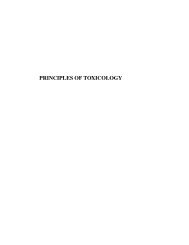Insect-pests - Biology East Borneo
Insect-pests - Biology East Borneo
Insect-pests - Biology East Borneo
Create successful ePaper yourself
Turn your PDF publications into a flip-book with our unique Google optimized e-Paper software.
Abstract<br />
Major <strong>pests</strong> and diseases of natural and planted<br />
Indonesian forests have been reviewed, threats assessed<br />
and a bibliography compiled. Indonesia has about 96<br />
million hectares of natural forests, dominated by<br />
dipterocarps, and 4 million ha of forest plantations.<br />
About half the plantations are in Java, consisting of<br />
long-established species including Tectona grandis,<br />
Pinus merkusii, Agathis dammara, Swietenia<br />
macrophylla, Dalbergia latifolia and Melaleuca<br />
cajuputi, and half in Sumatra and Kalimantan, mainly<br />
fast growing pulpwood species. Major plantation<br />
species are: Tectona grandis, Pinus merkusii, Acacia<br />
mangium, Agathis dammara, Paraserianthes falcataria,<br />
Swietenia macrophylla, Gmelina arborea, mangrove<br />
species, Eucalyptus spp., Dalbergia spp., Melaleuca<br />
cajuputi and Azadirachta excelsa. Only small-scale<br />
plantations exist for the other species reviewed, viz.,<br />
Alstonia spp., Anthocephalus sp., Dipterocarpaceae,<br />
Dyera spp., Eusideroxylon zwageri, Gonystylus<br />
bancanus, Koompassia spp., Maesopsis eminii,<br />
Ochroma pyramidale, Octomeles sumatrana, Peronema<br />
canescens and Schleichera oleosa. Occasional and<br />
unpredictable insect outbreaks have occurred in natural<br />
stands of Pinus merkusii, Plaquium sp., Casuarina<br />
junghuhniana, mangroves, etc., but plantations of teak,<br />
pine, mahogany and Paraserianthes falcataria etc., are<br />
damaged by <strong>pests</strong> every year. In natural forests high<br />
host density appears to be a predisposing factor for pest<br />
build-up. Serious <strong>pests</strong> occur on Tectona grandis, Pinus<br />
merkusii, Paraserianthes falcataria and Swietenia<br />
macrophylla, with the most damaging being the<br />
Paraserianthes trunk borer, Xystrocera festiva. Disease<br />
problems are less significant than <strong>pests</strong> in the natural<br />
forests and no major disease outbreak has occurred in<br />
plantations, although many fungal diseases are prevalent<br />
in nurseries. No major pest or disease has been recorded<br />
on the minor plantation species, but their history is too<br />
short and planted areas too small to draw reliable<br />
conclusions on their susceptibility. There are indications<br />
of impending problems, e.g. root rot in Eucalyptus spp.<br />
and root and stem rot in Acacia mangium. There is also<br />
the risk of new <strong>pests</strong> in Acacia mangium, Gmelina<br />
arborea, Shorea spp. and Peronema sp. Research<br />
capacity in Indonesia is inadequate to meet the existing<br />
and future challenges and more collaboration between<br />
Government, universities and plantation companies is<br />
needed for pest and disease surveillance and research in<br />
the rapidly expanding forest plantations.
















